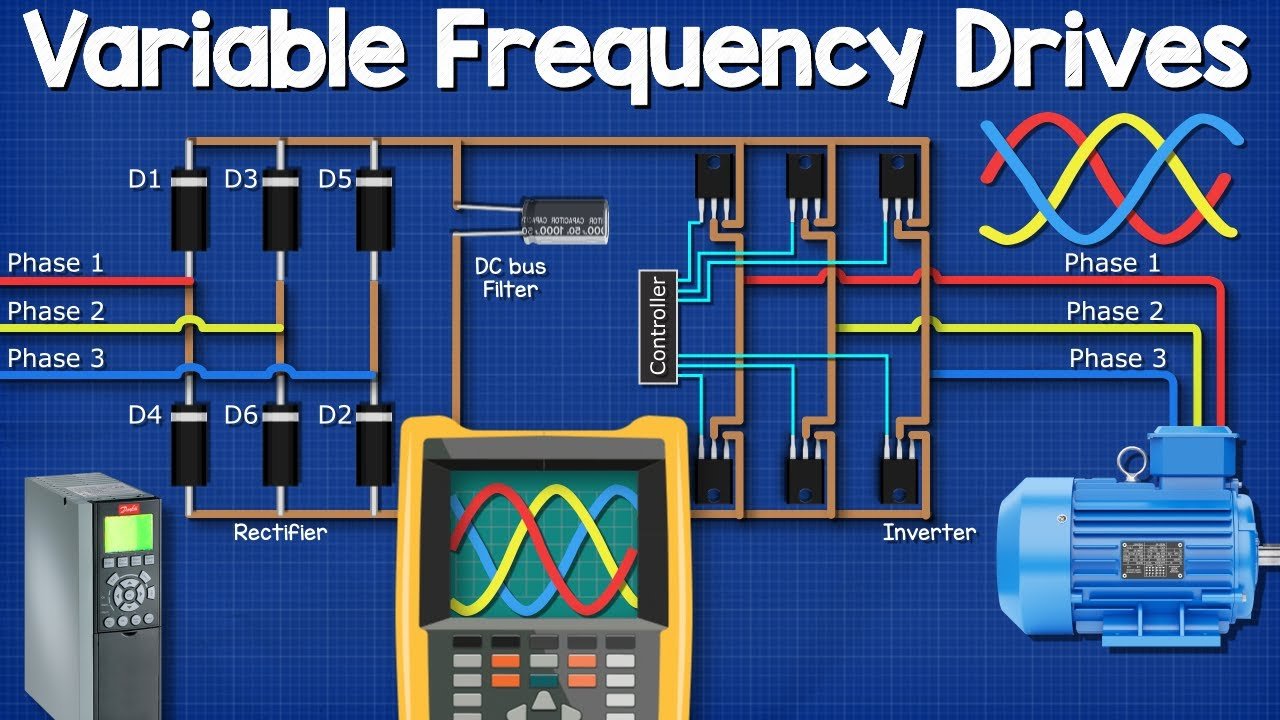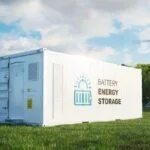
What Are VFDs (Variable Frequency Drives)?
Variable Frequency Drives (VFDs) are essential components in modern industrial and commercial applications, enabling precise control over electric motor speed and torque. By adjusting the frequency and voltage supplied to an AC motor, VFDs improve energy efficiency, reduce mechanical stress, and enhance process control. In this article, we will explore the different types of VFDs, their applications, benefits, and commonly asked questions.
How Do Variable Frequency Drives Work?
A Variable Frequency Drive operates by converting the fixed-frequency AC power supply into variable-frequency AC power, which allows for precise speed and torque adjustments. The working mechanism of a VFD consists of three main stages:
- Rectifier Stage: Converts incoming AC power into DC.
- DC Bus: Smooths and regulates the converted power.
- Inverter Stage: Converts DC back to AC at a controlled frequency and voltage.
By dynamically adjusting motor speed, VFDs enhance efficiency, reduce wear and tear, and optimize energy consumption.
Types of Variable Frequency Drives
VFDs can be categorized based on different control methods and motor compatibility. The three main types include:
1. Voltage Source Inverter (VSI) VFDs
VSI-based VFDs use a solid-state switching system to convert DC power into AC power. These drives are the most commonly used due to their efficiency, reliability, and broad application range.
2. Current Source Inverter (CSI) VFDs
CSI-based VFDs regulate motor speed by controlling the current supplied to the motor. They are typically used in high-power applications such as mining, oil and gas, and marine propulsion.
3. Pulse Width Modulation (PWM) VFDs
PWM VFDs are the most widely used type, offering precise motor speed control with minimal energy losses. These drives utilize rapid switching of transistors to create a variable voltage waveform, improving efficiency and reducing harmonic distortion.
CF40-B Series High Performance Variable Frequency Drive
Applications of VFDs
Variable Frequency Drives are used across various industries for motor control and energy optimization. Some common applications include:
- HVAC Systems: Used in fans, pumps, and compressors to improve energy efficiency and reduce wear.
- Industrial Automation: Essential for conveyor systems, robotic arms, and processing equipment.
- Water and Wastewater Treatment: Control of pumps and aeration systems for optimal efficiency.
- Oil and Gas Industry: Used in drilling rigs, compressors, and pipeline pumps.
- Renewable Energy Systems: Integration with wind and hydroelectric power generation.
Benefits of Using VFDs
- Energy Savings: Reduces power consumption by adjusting motor speed according to demand.
- Extended Equipment Lifespan: Minimizes mechanical stress on motors and driven systems.
- Improved Process Control: Allows precise speed adjustments for better productivity.
- Reduced Maintenance Costs: Lowers the frequency of repairs and component replacements.
- Lower Operational Costs: Decreases electricity expenses and enhances system efficiency.
Common Questions About Variable Frequency Drives
1. What is the difference between a VFD and a soft starter?
A soft starter gradually increases motor voltage to reduce inrush currents, while a VFD provides full motor speed control by varying frequency and voltage.
2. Can VFDs be used with any motor?
VFDs are primarily designed for AC motors, but compatibility depends on motor specifications. Special considerations must be taken for older or non-inverter-duty motors.
3. Do VFDs cause harmonics in the electrical system?
Yes, VFDs can introduce harmonics, but proper filtering solutions, such as line reactors and harmonic filters, can mitigate these effects.
4. How do I choose the right VFD for my application?
Consider factors such as motor power rating, load characteristics, required control features, and environmental conditions when selecting a VFD.
5. Are VFDs safe to use?
Yes, modern VFDs have built-in protections against overvoltage, overcurrent, and thermal overloads, ensuring safe operation.
By understanding the function, types, and benefits of Variable Frequency Drives, businesses can optimize their motor-driven systems for enhanced efficiency and reliability. Whether for industrial automation or energy savings, VFDs are an indispensable technology in modern electrical applications.
Author Profile
Latest entries
 IoT2025-04-14Electrical Automation – The Indispensable Behind-the-Scenes Hero of the Internet of Things
IoT2025-04-14Electrical Automation – The Indispensable Behind-the-Scenes Hero of the Internet of Things Electrical Automation Knowledge2025-04-11Electrical Automation Solutions in the Energy Storage Industry: Applications, Advancements, and Benefits
Electrical Automation Knowledge2025-04-11Electrical Automation Solutions in the Energy Storage Industry: Applications, Advancements, and Benefits Electrical Safety & Protection2025-04-06Electric Motor Protection and Control Systems: An In-depth Overview
Electrical Safety & Protection2025-04-06Electric Motor Protection and Control Systems: An In-depth Overview Electrical Automation Knowledge2025-04-01The Application of Electrical Automation in the New Energy Industry
Electrical Automation Knowledge2025-04-01The Application of Electrical Automation in the New Energy Industry











